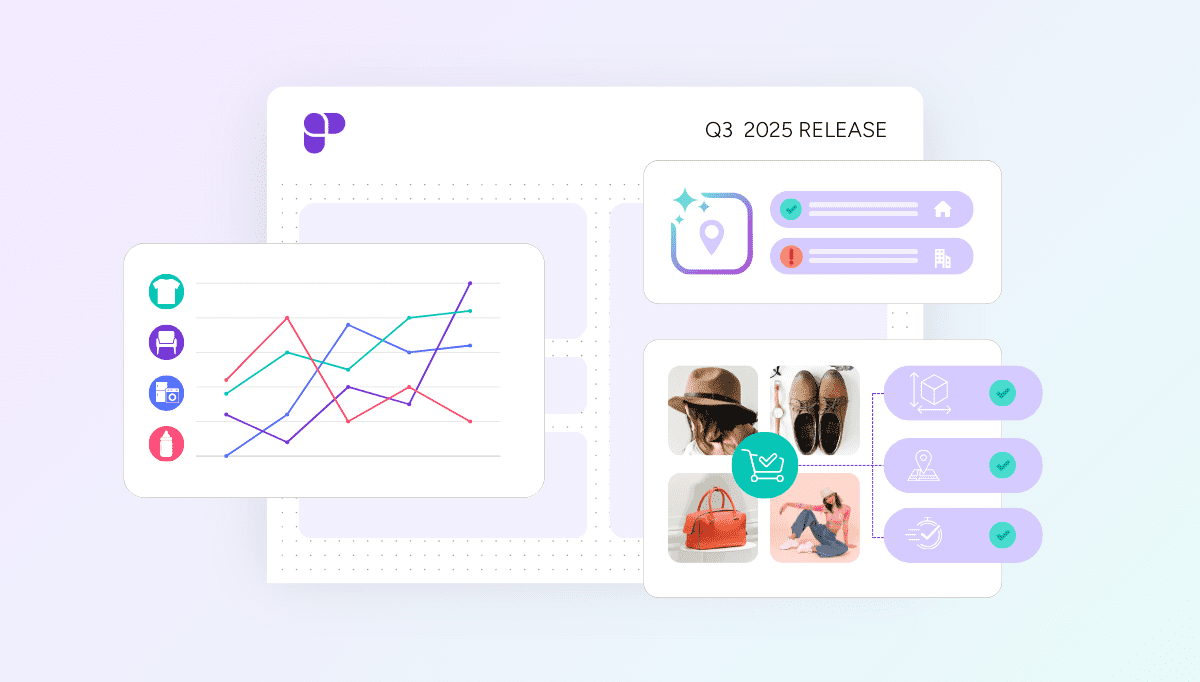The most significant changes in retail aren’t always the flashiest. I’ve sat on both the retailer and tech side of the table, and I’ve learned that trends in this space often grow gradually. Paying attention to the smaller shifts can alert you to the seismic shakeups that lie ahead.
When Sam Howard, Rithum’s Head of Merchandising, and I joined the Retaili$tic Podcast, we covered a lot of the trends impacting the industry. Some were major focal points across the industry, while others were smaller ones we’ve kept an eye on at Rithum. Here are five that I’ll be watching after our discussion on Retaili$tic—and what lies ahead for each.
1. The brand vs. retailer divide is disappearing
Not long ago, there was a distinct difference between brands and retailers. But that line has become increasingly blurred: business models are blending, and so are the problems leaders face.
As Sam said on the podcast, the continued adoption of direct-to-consumer (DTC) strategies is what’s closing the gap: “There’s seldom a differentiation between a retailer and a brand anymore because so many brands are leaning into DTC expansion and creating a connection with the customer . . . most brands are retailers in and of themselves.”
This strategic convergence means that the pain points once unique to either brands or retailers are now shared. Marketplace integrations, fulfillment, return policies, and retail media are all creating challenges for businesses looking to connect with customers, and it’s why companies need platforms and partnerships that can flex across models.
2. Merchants are analysts
There’s a persistent myth that merchants are purely creatives: taste-driven, product-focused, instinct-led. But that’s only part of the picture. The reality is that modern merchants are weighing increasingly sophisticated analytics as heavily as intuition.
During the episode, I spoke on my experience with merchants embracing data: “Merchants are completely data-obsessed. Their job is so dependent on reading the data and following it. For both profitability and performance … they’re looking at a lot of things.”
Supporting merchants’ data-driven decision making is where Rithum shines. We help merchants become better analysts by surfacing performance metrics beyond sales. Our clients understand what their customers need, and Rithum provides data-based insights that empower them to meet those needs.
3. Smart retailers are turning physical space into strategy
Physical stores aren’t dead, but they’re not just stores anymore, either. Retailers are reimagining how their square footage serves marketing, fulfillment, community, and experience.
I shared her vision for the future of physical retail, and I stand by it: Today, when you go to a store and try an item on, but you don’t necessarily leave with it. You order it online and it gets sent from somewhere else. That’s where I see it heading: physical locations becoming more of showrooms and experiences.
This isn’t a shocking shift, as it aligns with what we hear from clients: Gen Z wants more than a transaction. They want an experience as much as they want the product, if not more. Retailers are embracing this and experimenting with spaces that function as marketing, content, and fulfillment centers all at once.
4. The future of retail media is generative and intent-driven
AI has flipped retail media on its head. It’s no longer just about ads; instead, a strategy to meet today’s search behaviors needs to encompass all kinds of discovery avenues.
Traditionally, retail media was all about search engine marketing for brands. Now it’s shifting to what we’re calling GEO, or generative engine optimization. When you type into ChatGPT, ‘Find me these running shoes under $150,’ you have a much more focused intent. That’s different than showing up on a site to browse. (I dive into this more on the podcast, give it a listen if you want more details).
This is a huge shift. It changes how brands build product pages, structure metadata, and leverage tools needed to get found. At Rithum, we’re already exploring how to support brands as shoppers turn to AI tools for recommendations, and are ready to help those who want to revamp their strategies.
5. Consumers want to buy from brands that reflect their values
Consumers’ preferences extend beyond product quality and pricing. What ultimately fosters lasting loyalty (particularly among Gen Z) is alignment on values and identity.
“Especially for younger generations, people want brands and retailers to play into their value set,” Sam explained. “The more brands and retailers can reflect those values—in events, in partnerships—the more authentic it feels. I think that authenticity is just so valuable.”
Our returns data backs this up. 88% of consumers said they expect free returns, but more than half said they’d accept restrictions if framed as environmentally responsible. This is where loyalty lives now—in values, not just in products.
Staying a step ahead of emerging trends
These shifts are redefining how brands and retailers operate. At Rithum, we work to make that transformation easier. Whether it’s aligning inventory models, surfacing performance insights, or helping brands show up where discovery happens, we equip our clients with the tools to stay ahead.
Check out the podcast for the full discussion, and reach out to our team if you want to talk about these trends in more detail—we’d love to hear what’s on your mind.
Some quotes have been lightly edited for context and clarity.




